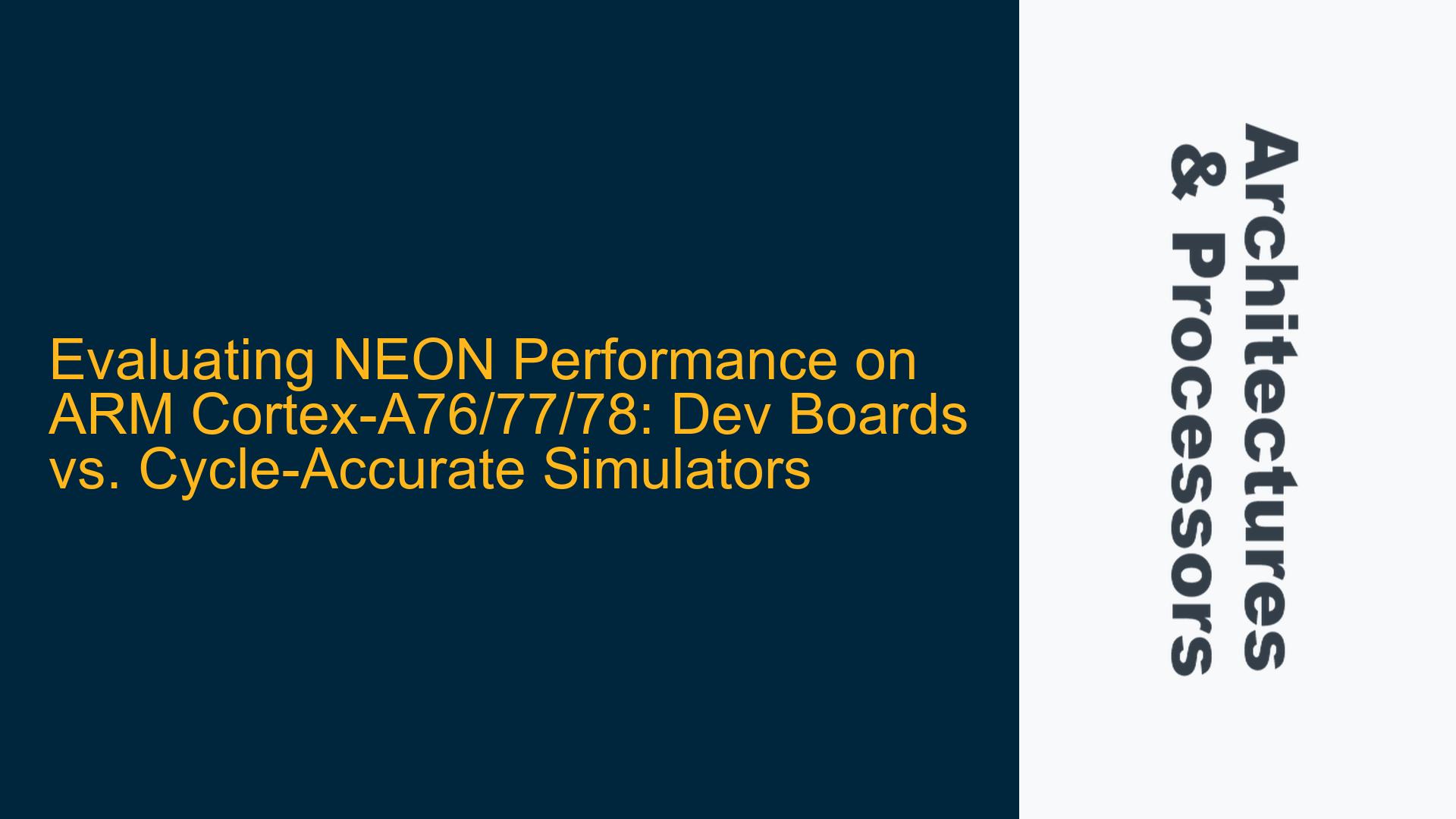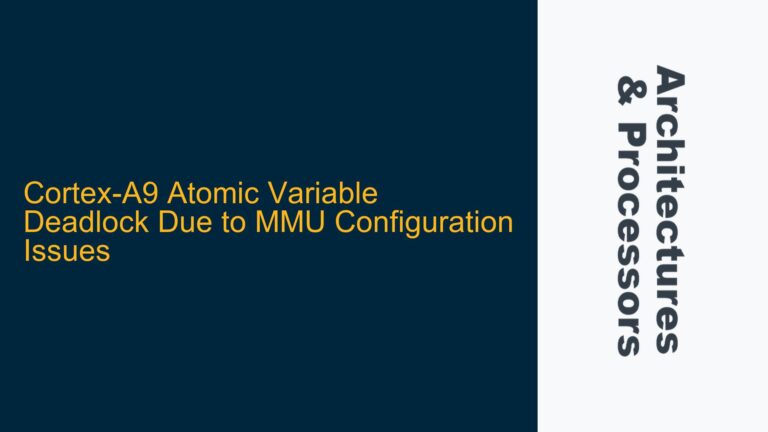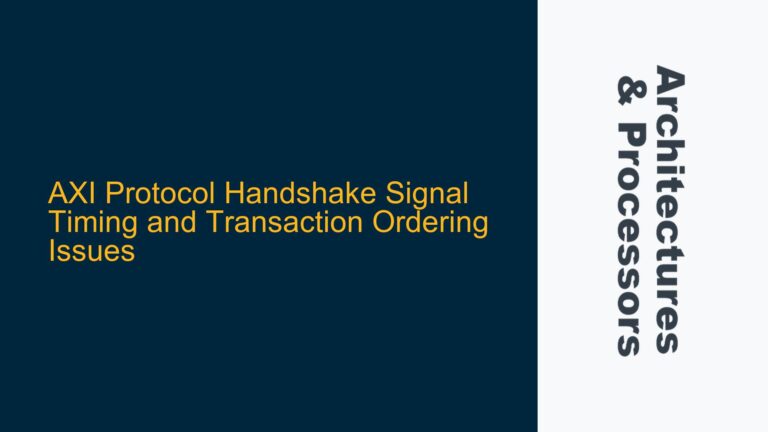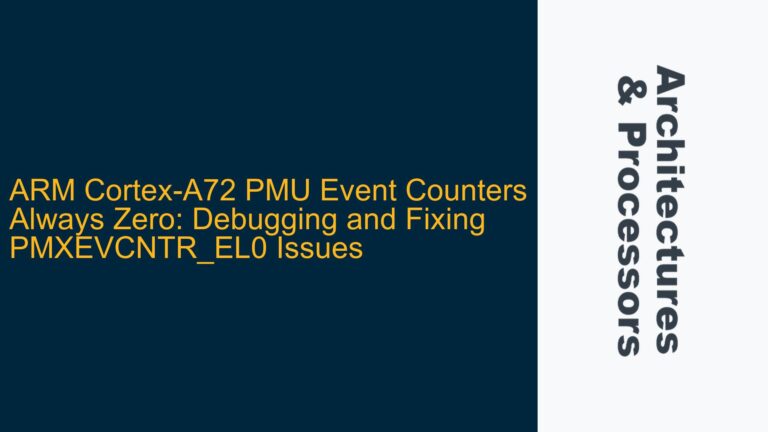ARM Cortex-A76/77/78 NEON Performance Evaluation Challenges
When working with advanced ARM Cortex-A series processors such as the A76, A77, and A78, evaluating the performance and energy efficiency of compiler techniques involving NEON instructions can be particularly challenging. NEON, ARM’s advanced SIMD (Single Instruction, Multiple Data) technology, is crucial for accelerating multimedia and signal processing applications. However, accurately measuring the performance and energy impact of NEON instructions requires access to either physical development boards or cycle-accurate simulators. Both approaches have their limitations and complexities, which must be carefully navigated to obtain reliable results.
The primary challenge lies in the availability and accessibility of suitable hardware and software tools. Development boards like those based on Qualcomm Snapdragon 855/865, which feature Kryo Gold CPUs derived from Cortex-A76 and A77, may not provide explicit documentation regarding NEON support. This lack of clarity can hinder the evaluation process. On the other hand, cycle-accurate simulators, such as ARM’s Cycle Models, offer precise performance measurements but are often restricted by licensing requirements and availability. The Fixed Virtual Platforms (FVPs) provided by ARM are useful for functional verification but fall short in delivering the granular performance metrics needed for detailed analysis.
Licensing Barriers and Limited Access to Cycle-Accurate Models
One of the significant hurdles in evaluating NEON performance on ARM Cortex-A76/77/78 processors is the restricted access to cycle-accurate simulation models. ARM’s Cycle Models are designed to provide detailed insights into the microarchitectural behavior of their processors, including timing, pipeline stages, and cache interactions. These models are invaluable for researchers and developers aiming to optimize code for specific ARM cores. However, obtaining access to these models typically requires a licensing agreement, which may not be feasible for individual researchers or academic institutions.
The licensing process can be opaque, and inquiries about access are often met with automated rejections or redirected to forums without clear resolution paths. This creates a barrier for those who need precise performance measurements but lack the resources or institutional support to navigate the licensing landscape. Furthermore, the availability of cycle-accurate models for the latest ARM cores, such as the Cortex-A76/77/78, is limited. For instance, the newest Cortex-A model available for public access might be the Cortex-A55, which does not meet the requirements for evaluating techniques targeting the more advanced A76/77/78 architectures.
Implementing Performance Evaluation with Available Tools
Given the challenges associated with accessing cycle-accurate simulators, researchers and developers must explore alternative methods to evaluate NEON performance on ARM Cortex-A76/77/78 processors. One approach is to utilize development boards that incorporate these processors, such as those based on Qualcomm Snapdragon 855/865. While these boards may not provide explicit documentation on NEON support, they often include the necessary hardware capabilities. By running benchmarks and performance tests directly on these boards, it is possible to gather empirical data on the impact of NEON instructions.
To ensure accurate measurements, it is essential to configure the development environment properly. This includes setting up the toolchain, enabling NEON instructions in the compiler, and using performance monitoring tools to track execution time, energy consumption, and other relevant metrics. Additionally, developers should consider the impact of the operating system and background processes on performance measurements. Running tests in a controlled environment, such as a minimal Linux kernel or bare-metal setup, can help mitigate these influences.
For those who require more granular insights than what development boards can provide, exploring open-source or academic simulation tools may be a viable alternative. While these tools may not offer the same level of detail as ARM’s Cycle Models, they can still provide valuable insights into the behavior of NEON instructions. Tools like gem5, an open-source computer architecture simulator, can be configured to model ARM processors and simulate NEON operations. Although setting up and calibrating these simulators requires significant effort, they offer a flexible and accessible option for performance evaluation.
In conclusion, evaluating NEON performance on ARM Cortex-A76/77/78 processors involves navigating a complex landscape of hardware and software tools. While development boards and open-source simulators offer practical alternatives to cycle-accurate models, they come with their own set of challenges. By carefully configuring the evaluation environment and leveraging available resources, researchers and developers can obtain the performance and energy efficiency data needed to optimize their compiler techniques.






